


 Source: Wikimedia Commons
Source: Wikimedia Commons
The Federation of Australia brought with it a whole new Parliament who go to work making legislation that would shape the future of Australia, most notably the White Australia Policy. Read through the resources below to learn more about Australia's Parliament and the legislation that would shape a nation.
This Turning Points in Australian Democracy timeline contains over 500 milestones that mark key events and turning points in Australian democracy. It takes you on a virtual journey through time and place, and glimpse key moments in the history of democratic ideas, laws and institutions.
Compared to some other parliaments around the world, Australia's Parliament is quite young but it is based on practices and ideals from much older parliaments. This in-depth paper explores the development of the Westminster system in Britain and parliamentary democracy in Australia.
Click on this map of Australia to find over 110 key documents that are the foundation of our nation.
The Immigration Restriction Act 1901, also known as the White Australia policy, affected migrants who came to Australia between 1901 and 1958. Read through this website to learn more about the policy and how it impacted Australia.
On 23 December 1901 the Immigration Restriction Act came into law. It had been among the first pieces of legislation introduced to the newly formed federal parliament. The legislation was specifically designed to limit non-British migration to Australia. It represented the formal establishment of the White Australia policy. Read through this article to learn more.
Immediately following Federation in 1901, policies were designed to keep Australia white and British. Non-racial language was used to minimise international condemnation, but the xenophobic concern was plainly evident. Read through this article to learn more.
In 1891, a handful of determined women from the Woman's Christian Temperance Union and the Victorian Temperance Alliance, together with other suffrage groups, went door-to-door with a petition to gain the right to vote for Victorian women. The 'Monster Petition' was 260 metres long and 20cm wide, and several attendants were needed to carry it into parliament when it was tabled in September 1891. Read through this website to learn more about women's suffrage in Australia.
Suffrage refers to a person’s right to vote in a political election. Voting allows members of society to take part in deciding government policies that affect them. Women’s suffrage refers to the right of women to vote in an election. With Australia a newly federated country, the Commonwealth Franchise Act 1902 allowed non-Indigenous women in all states to vote and stand as candidates in federal elections. Read through this website to learn more about this fight for women's suffrage.
On 18 December 1894 the South Australian Parliament passed the Constitutional Amendment (Adult Suffrage) Act. The legislation was the result of a decade-long struggle to include women in the electoral process. It not only granted women in the colony the right to vote but allowed them to stand for parliament. This meant that South Australia was the first electorate in the world to give equal political rights to both men and women. Read through this website to learn more.
When Australia federated in 1901, the Constitution restricted voting rights in federal elections to women who held those same rights at a state level. Women in South Australia and some in Western Australia had been granted the right to vote. After lobbying by suffragists and some progressive politicians, the Commonwealth Franchise Act was enacted on 12 June 1902. Women in Australia over the age of 21 could now vote in national elections and stand for the Australian Parliament, despite many not possessing the right to do so in their home states. The right to vote in federal elections was not granted to First Nations women or men until 1962. Read through this website to learn more.


The White Australia Game was registered in 1914 and was popular throughout the 1920s. Migration Heritage Centre
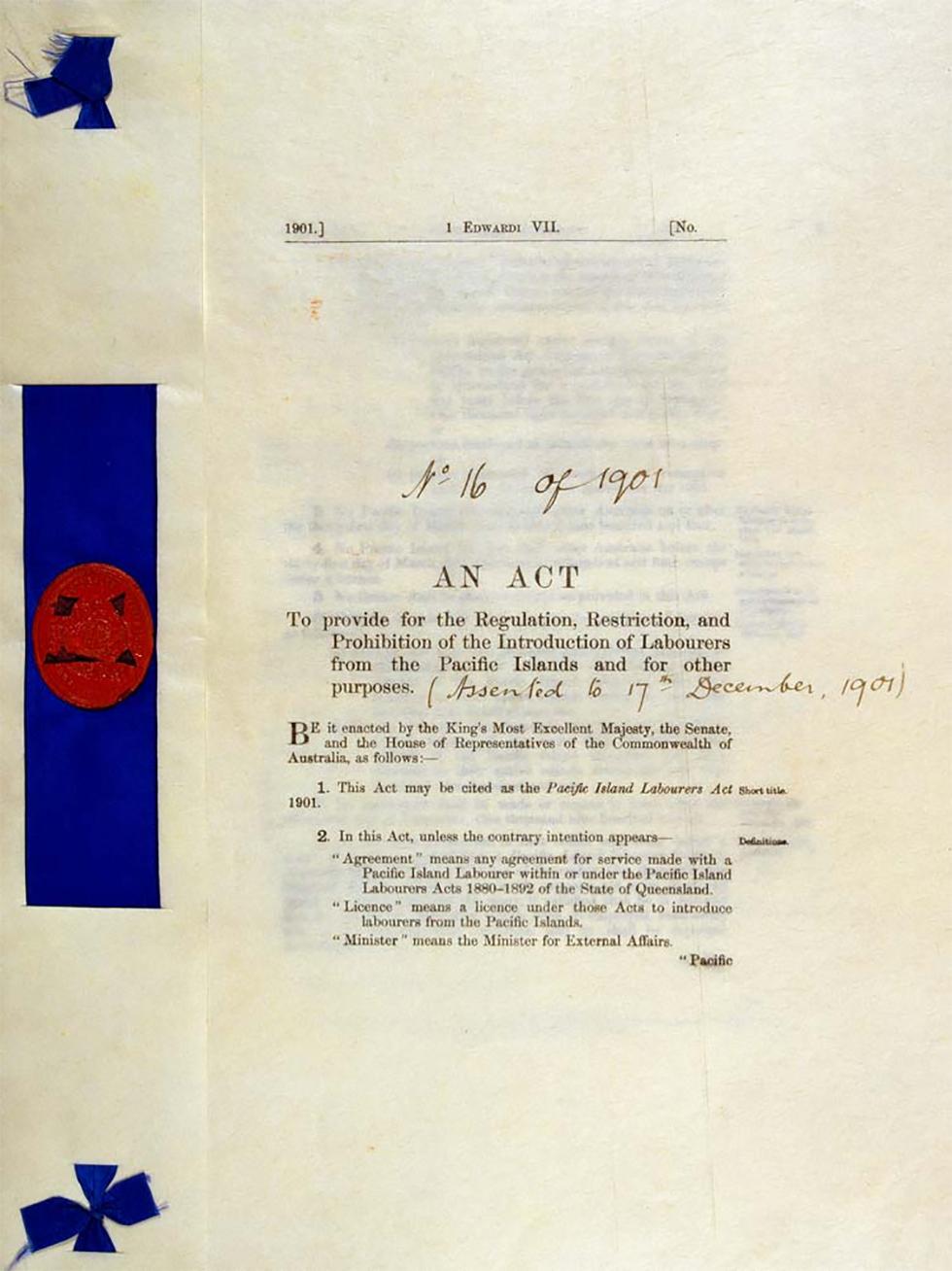
This is an Act passed by the Australian federal parliament in 1901. It is headed: ‘An Act to provide for the Regulation, Restriction, and Prohibition of the Introduction of Labourers from the Pacific Islands and for other purposes’, known as the Pacific Island Labourers Act 1901.
This document enacted a law to deport the vast majority of the Pacific Islanders living in Australia. This Act was part of a package of legislation introduced in the first year of Australia’s new federal parliament. The identification of the Act as ‘No. 16 of 1901’ means that this was the sixteenth piece of legislation passed by the federal parliament in 1901.
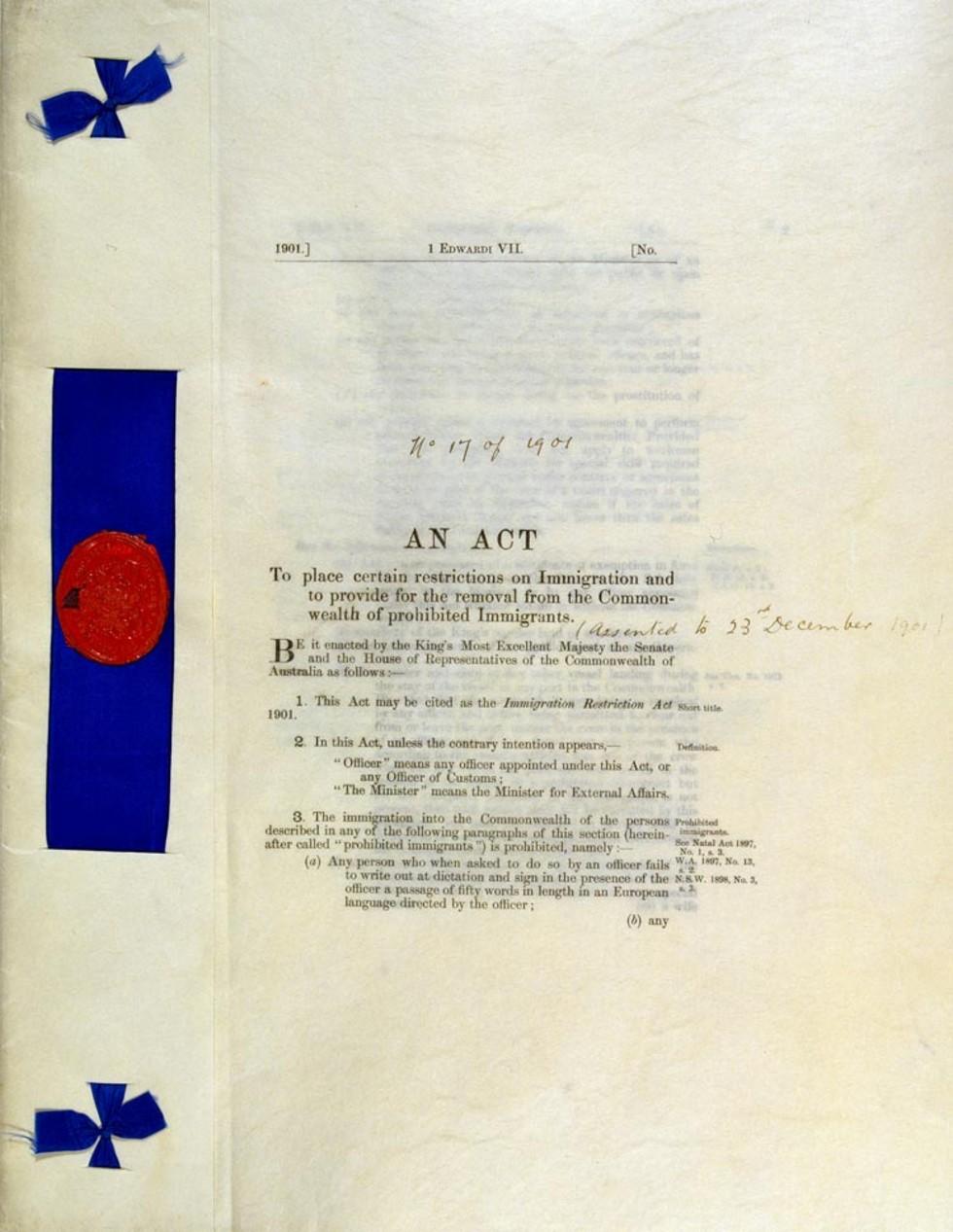
This Act, known as the Immigration Restriction Act, was passed by the Australian Parliament in 1901. It is headed ‘An Act to place certain restrictions on Immigration and to provide for the removal from the Commonwealth of prohibited Immigrants’.
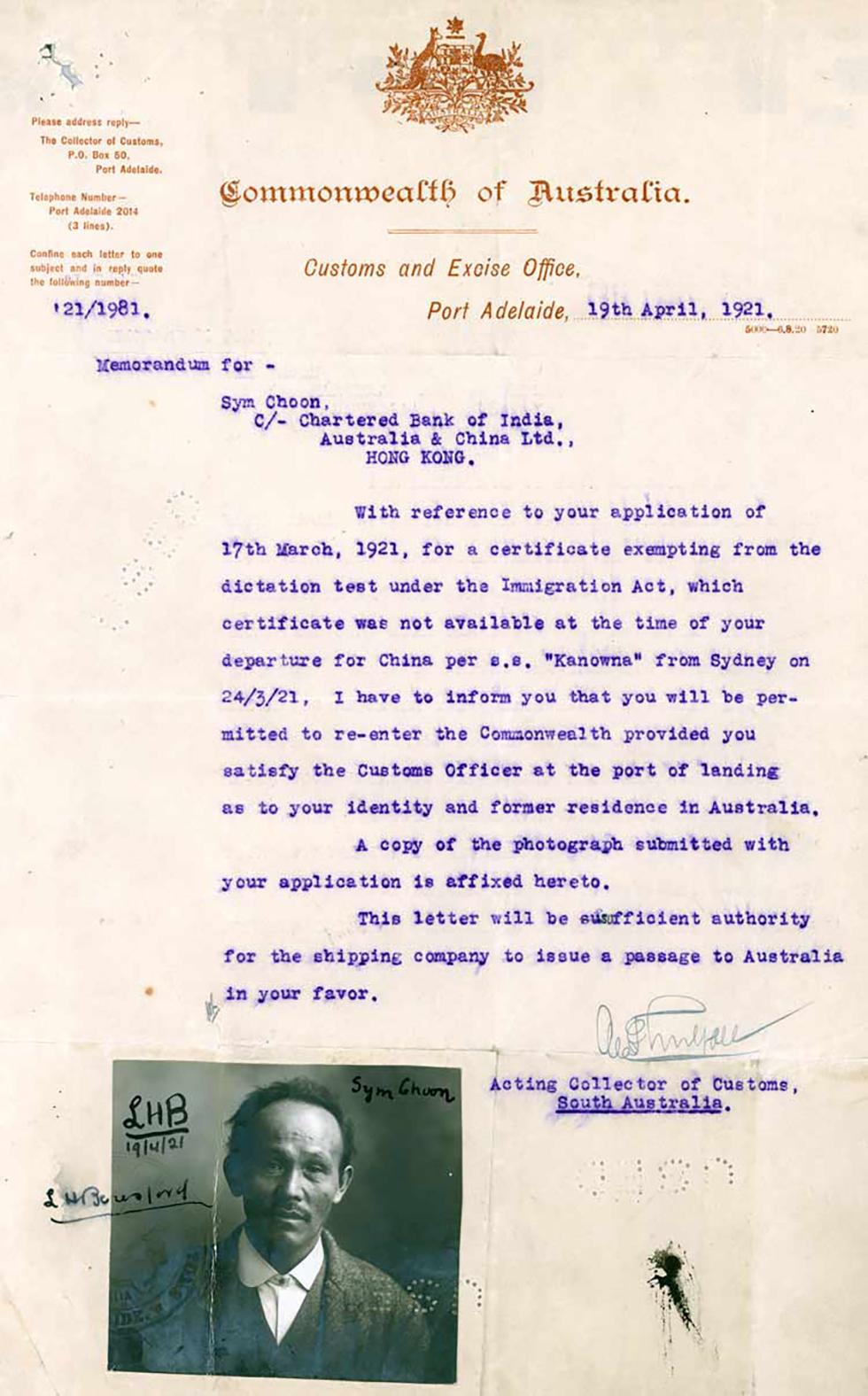
This is a letter exempting Hong Kong-born Sym Choon from the Immigration Restriction Act’s dictation test and authorising him to re-enter Australia after a visit overseas.
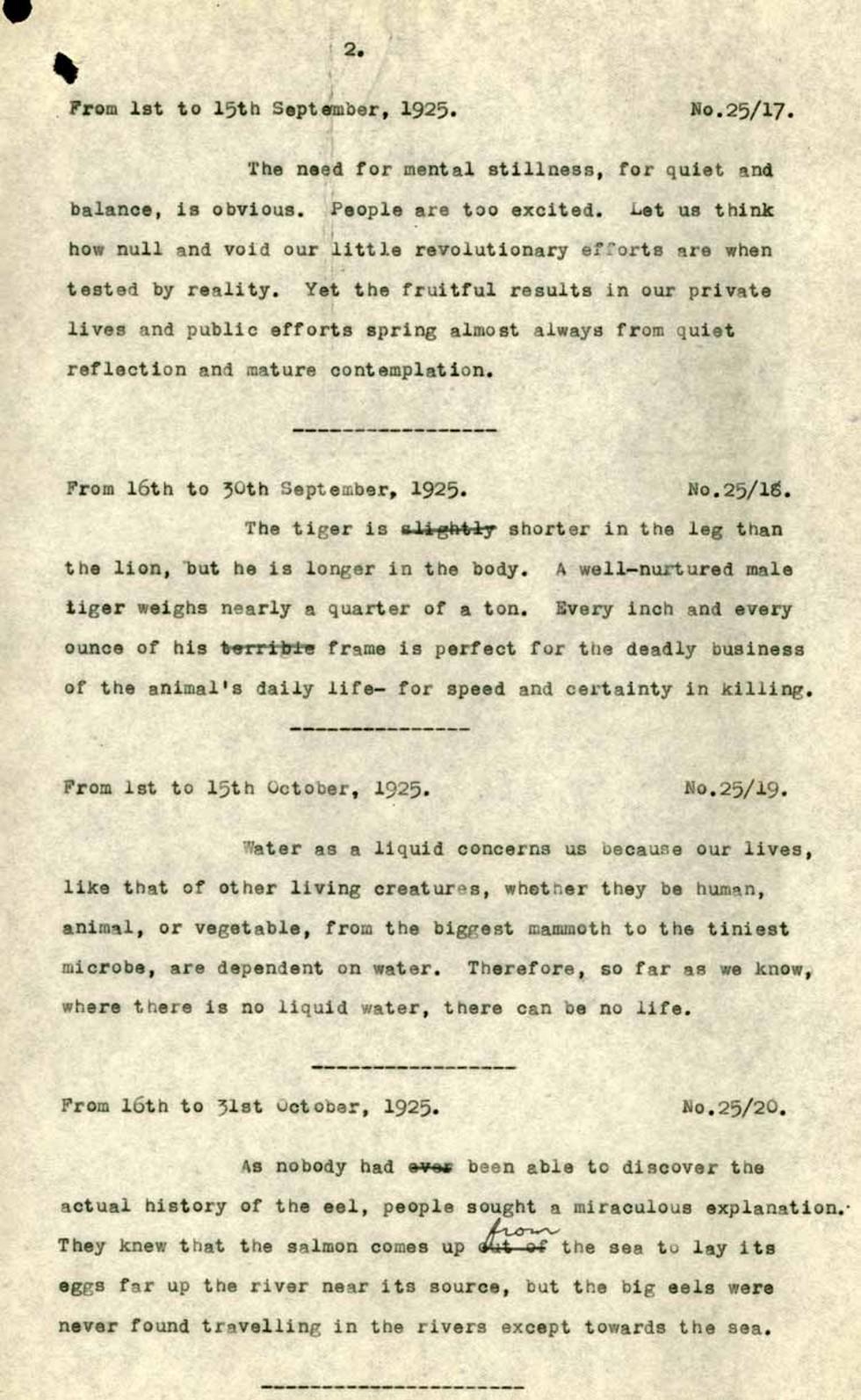
The dictation test was one of the primary ways the Immigration Restriction Act was implemented. Anyone failing to write the passage down could be deported under the Immigration Restriction Act 1901. The test could be given in any European language. The Immigration Restriction Act 1901, was a landmark law passed by the first parliament of the Commonwealth of Australia. The Act provided the cornerstone of the unofficial 'White Australia' policy. This policy, aimed at maintaining Australia as a nation populated predominantly by white Europeans, remained in place for many decades.
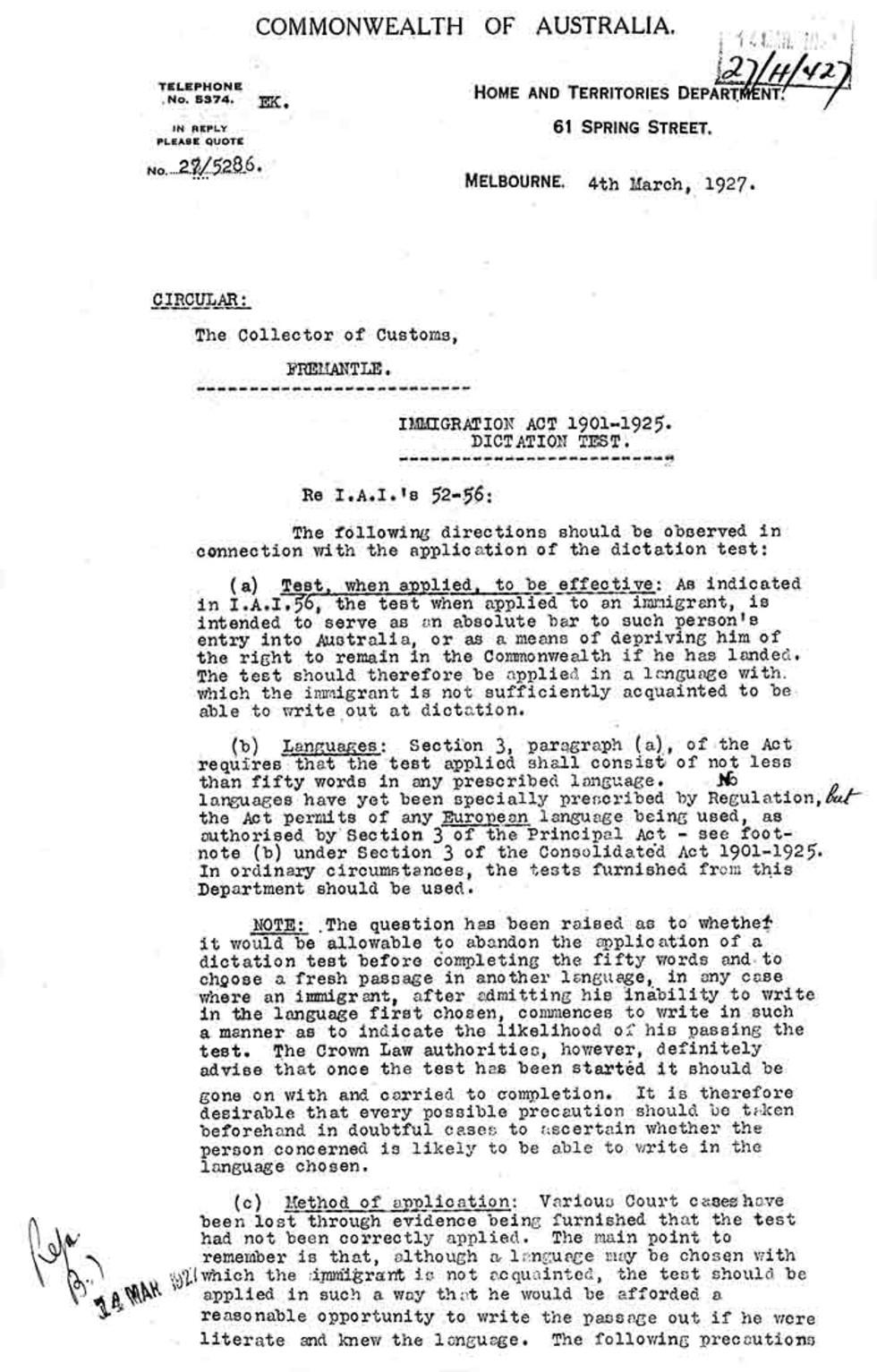
This is a circular (a written statement explaining government policy) from FJ Quinlan, Assistant Secretary of the Australian Government’s Department of Home and Territories, to the Collector of Customs in Fremantle, Western Australia. It gives detailed directions on how to apply the Immigration Restriction Act’s dictation test.

In an extraordinary effort to gain the right to vote for all Victorian women, a handful of dedicated women took to the streets in 1891 to collect signatures for a petition to present to the Parliament of Victoria. The result was an impressive collection of close to 30,000 signatures from women from all walks of life. Tabled in Parliament in September 1891, with the support of then Premier James Munro, the petition sought that ‘Women should Vote on Equal terms with Men'.
Now one of the State's archival treasures, the Women's Suffrage Petition (1891) reflects the dedicated work of those women, who went from door to door across Victoria to collect the signatures. Its tremendous length earned it the name of the ‘Monster Petition'. The original petition is approximately 260 metres long and 200mm wide and is made of paper pasted to cotton or linen fabric backing, rolled onto a cardboard spindle which rests on a Perspex stand. It takes three people three hours to unroll the petition from one spool to another – a slow and careful process. The approximate 30,000 signatures vary in quality and colour inks, even pencil.
Several interesting signatures adorn the top of the petition, including:
Margaret McLean (as Mrs William McLean), head of the Woman's Christian Temperance Union and campaigner for women's rights and the vote
Jane Munro (as Mrs James Munro), wife of the Premier who presented the petition to Parliament
Margaret Higinbotham, wife of George Higinbotham who was a controversial politician and lawyer
Bessie Lee, a working-class woman who became famous as a temperance campaigner and author.
The petition also played an important role in Federation, because in 1901 Australia became the first nation in the world to give women both the right to vote and the right to stand for Parliament. In 2006, through the combined efforts of the Genealogical Society of Victoria, the Royal Historical Society of Victoria, Public Record Office Victoria and the Parliament of Victoria, the Women's Suffrage Petition was transcribed and developed into a database.
It is now possible for anyone to search the database to find out whether their female ancestors were one of the great women who signed the petition and made a significant contribution to women's rights today.
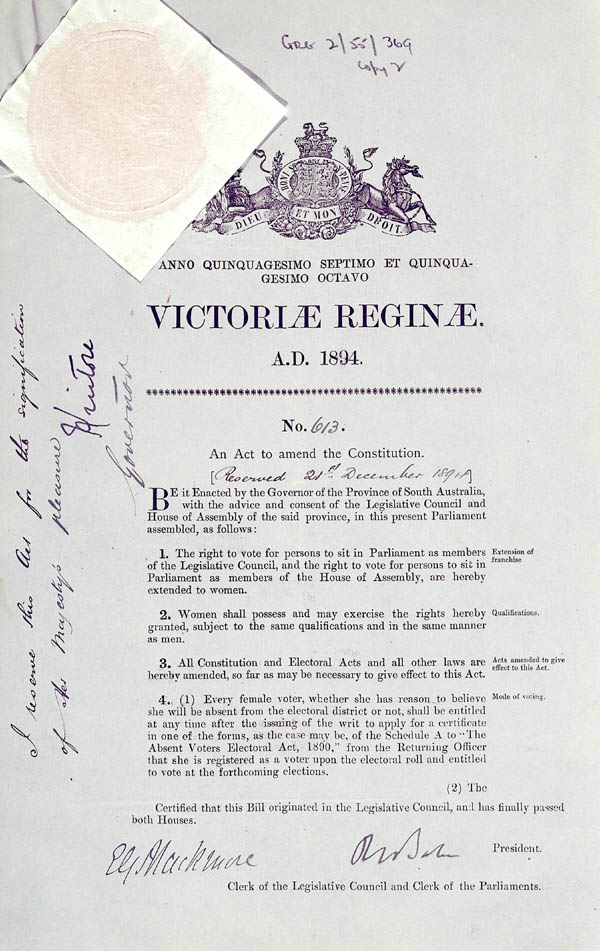
The documents shown are the Bill passed by the South Australian Parliament in 1894 to grant women the right to vote and stand for election in the Colony's Parliament, and a letter from the Attorney-General dated 21 December 1894 advising Governor Kintore that Royal Assent would be required to enact the Bill. The Bill was enacted when Queen Victoria signed her Assent on 2 February 1895.
These documents show that South Australian women won the vote in 1895, not 1894 as usually stated. They were the second to gain the vote, after New Zealand women who secured this right in 1893, and the first in the world to gain the right to stand for election. Thus Catherine Helen Spence's candidacy for election as a Federation Convention delegate was the first such in the world.
The Act also had a more generous provision for absent voting by women than by men, in that women could get an automatic postal vote if they were more than three miles from the nearest polling booth or if they felt the state of their health prevented them from voting on the day.
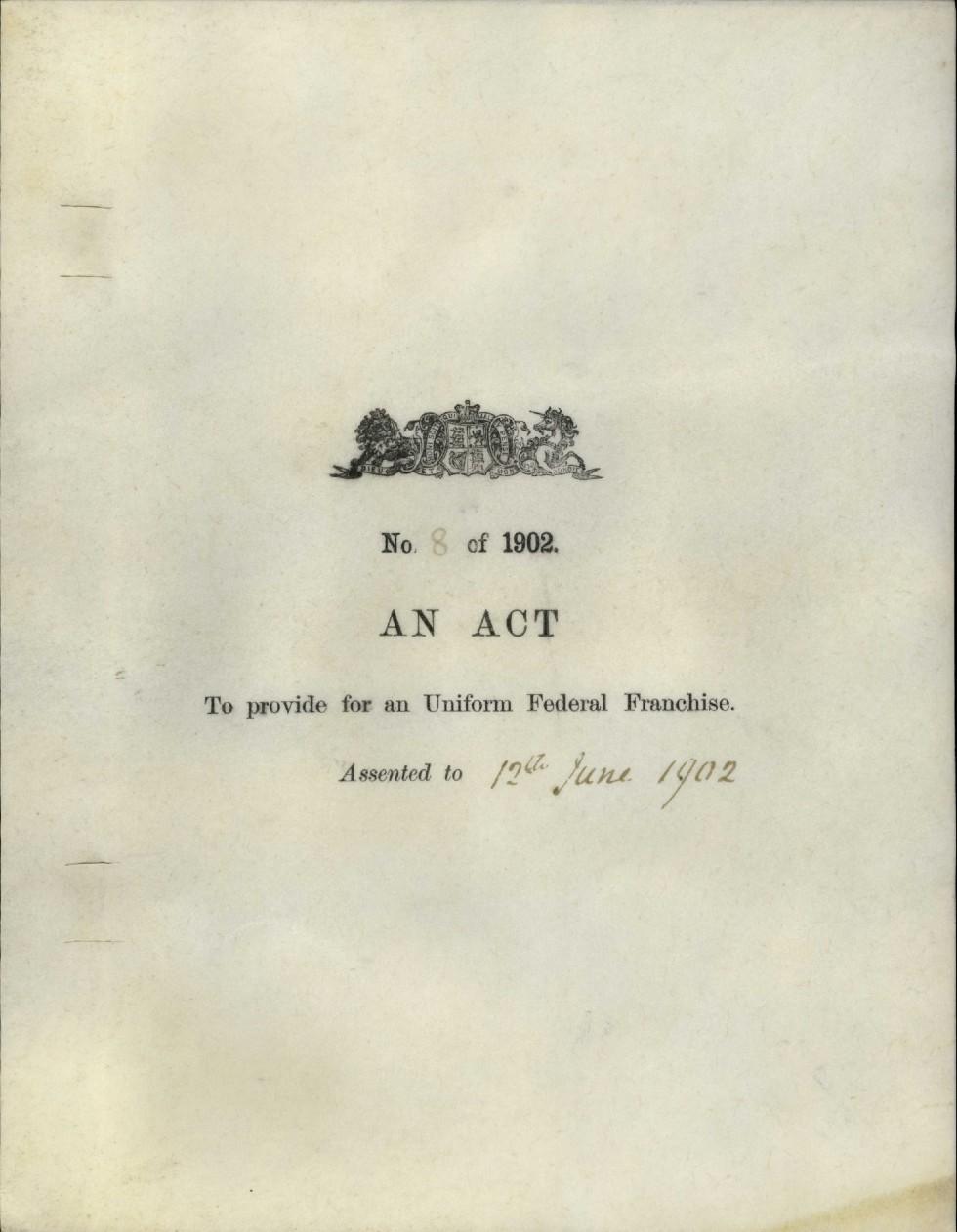
The women’s rights movement formed in the 1880s in English-speaking countries across the world. Suffragettes campaigned for women’s rights to vote and to stand in elections.
The Commonwealth Franchise Act was passed in 1902 and gave women full suffrage. While this was considered a progressive policy, it was limited to women of European background. People of Aboriginal, Torres Strait Islander, African, Asian or Pacific Islander (excluding New Zealand) heritage were not eligible.

Please be warned that many of the videos below feature derogatory and offensive language. Please proceed with caution.

 Australia's constitution : a framework for democracy
by
Australia's constitution : a framework for democracy
by
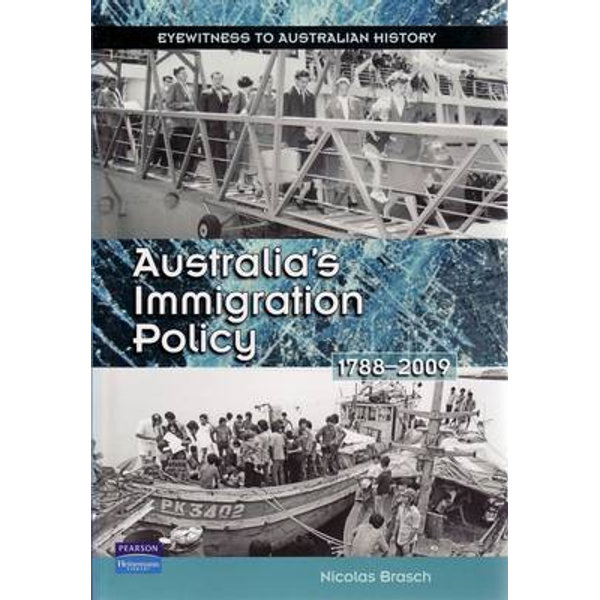 Australia's immigration policy : 1788-2009
by
Australia's immigration policy : 1788-2009
by
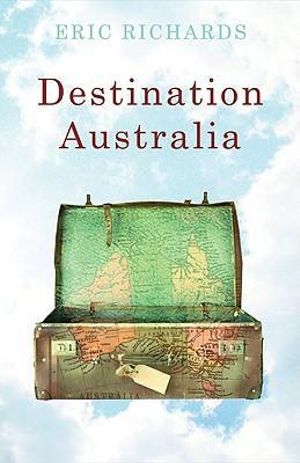 Destination Australia : migration to Australia since 1901
by
Destination Australia : migration to Australia since 1901
by
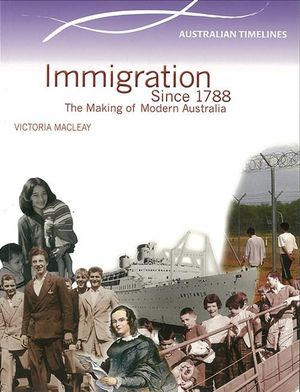 Immigration since 1788 : the making of modern Australia
by
Immigration since 1788 : the making of modern Australia
by
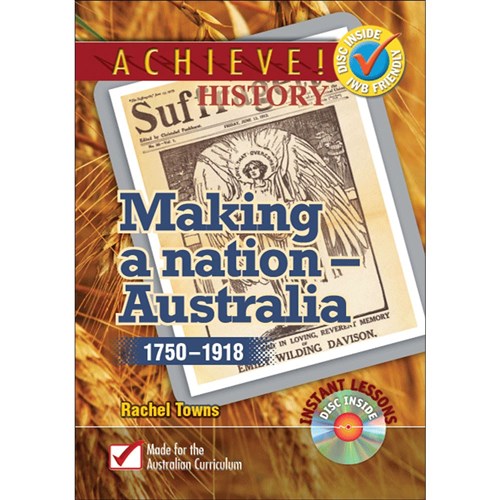 Making a nation : Australia, 1750-1918
by
Making a nation : Australia, 1750-1918
by
 Inside the Parliament of Victoria
Inside the Parliament of Victoria